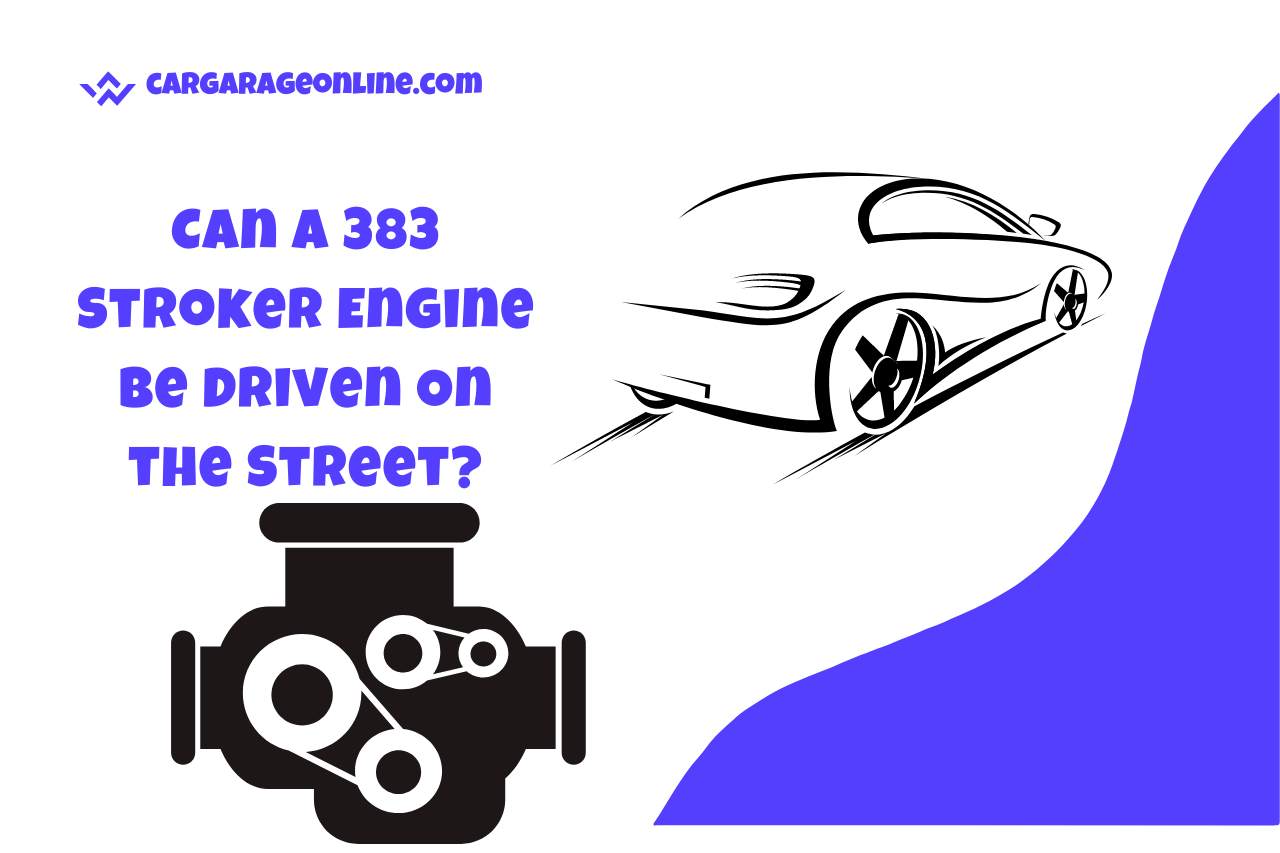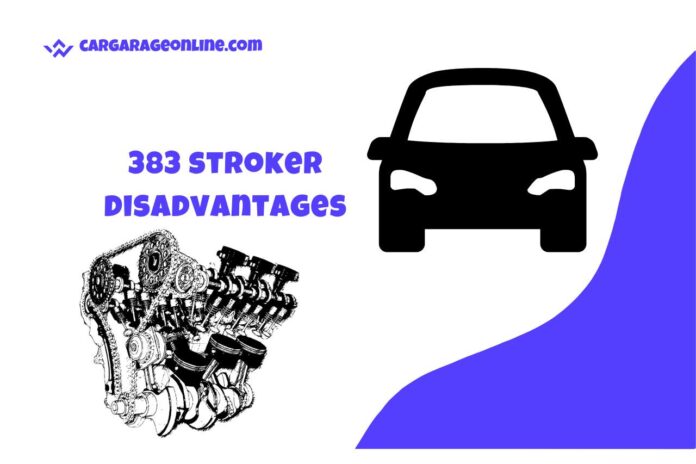Those who love cars and want to improve the performance of their rides frequently choose the 383 stroker engine. It is a modified version of the original 350 small-block Chevrolet engine, producing more power and torque by using aftermarket parts and a more significant displacement. The 383 stroker has a lot of performance benefits, but there are several drawbacks that prospective users and builders should be aware of. In this article, we’ll examine the drawbacks of the 383 stroker engine, emphasizing the difficulties and factors to consider when making such a high-performance upgrade.
A 383 Stroker Engine: What is It?
A 350 small-block Chevrolet engine has been transformed into a 383 stroker engine. Performance enthusiasts who want to boost their cars’ power and torque output favor it as one of the most well-known and widely-used engine enhancements in the automotive industry.
The phrase “383 strokers” describes an engine with a more significant displacement than an original 350 small-block engine thanks to adding a larger aftermarket crankshaft with an extended stroke. The number “383” in the name refers to the engine’s approximate overall displacement of 383 cubic inches (6.3 liters), which inspired it.
- The aftermarket crankshaft used by the 383 strokers has a more significant stroke than the 350 engine’s factory crankshaft. The longer stroke increases the piston’s journey, leading to a more significant swept volume and displacement.
- The cylinder walls of the engine block are bored out to allow for larger pistons. The cylinder volume is expanded during this operation, further contributing to increased displacement.
- The stock pistons and connecting rods may be changed to handle the added power and torque for more robust and lighter aftermarket parts.
- A high-performance camshaft is frequently used with the 383 strokers to optimize valve timing and boost engine performance.
What Benefits Do 383 Stroker Engines Offer?
- Greater volume for the air and fuel mixture in the cylinders arises from the 383 stroker engine’s more significant displacement (383 cubic inches) compared to the original 350 small blocks (350 cubic inches). This increase in displacement results in more power and torque being produced.
- The 383 stroker engine’s aftermarket crankshaft’s longer stroke increases low-end torque and gives it more pulling power at lower RPMs. This quality makes it ideal for stop-and-go traffic and street driving.
- The 383-stroke engine can rev higher than the original 350 engine despite producing a large amount of low-end torque, which enhances top-end power and performance. This qualifies it for use on both the road and the racetrack.
- Increased displacement, a performance camshaft, better pistons, and aftermarket cylinder heads provide significantly more horsepower and torque than the base 350 engine.
- The 383 stroker engine is adaptable and may be built for various uses, including street rods, muscle cars, off-road vehicles, and drag racing. It is excellent for various driving styles and settings because of its broad torque curve and power output.
- Due to the 383 stroker’s popularity, a sizable aftermarket support network has developed, making it simpler to locate performance components, modifications, and tuning choices for the engine.
- Compared to creating a unique high-displacement engine from scratch, the 383 stroker engine is sometimes considered a more affordable performance enhancement. It builds on the 350 small-block bases already in place and improves them with aftermarket components.
- The 383 stroker engine is popular among enthusiasts who want to keep their cars feeling quaint and nostalgic since it upholds the historic small-block Chevrolet history.
What Drawbacks Do a 383 Stroker Engine Have?
- When opposed to keeping the conventional 350 small-block engine, building a 383 stroker engine can be more expensive overall because it requires aftermarket parts, machining, and labor.
- The modifications made to the engine to enhance its displacement and power output may put more strain on certain parts, which could affect reliability. The engine may be more prone to problems like overheating, early wear, and potential breakdowns if it is not designed and adjusted appropriately.
- Tuning a 383 stroker engine can be more complex than a standard engine. To get the best performance and economy, rigorous calibration must account for the more significant displacement, various camshaft profiles, and aftermarket components.
- The 383 stroker engine has more displacement and power than the original 350 engine, which might produce less fuel efficiency, predominantly if driven aggressively.
- Depending on the modifications and local legislation, a 383 stroker engine may not meet emissions standards, which could restrict its use in some areas or applications.
- As a result of the increased heat production caused by the increased power output, the cooling system may need to be upgraded to maintain the proper engine temperature and avoid overheating.
- Upgrades to the drivetrain’s mechanical parts, including the clutch, rear differential, and transmission, may be necessary to handle the 383 stroker engine’s higher torque output.
- The 383-stroke engine’s greater size in some vehicles may make it difficult to fit it into the engine bay, sometimes necessitating modifications or notable fixes.
- Modifications that considerably boost engine performance might not adhere to local laws and emissions standards in some regions or jurisdictions.

Can a 383 Stroker Engine be Driven On the Street?
On the street, a 383 stroker engine is legal. Many enthusiasts use 383 stroker engines in their street-legal cars to take advantage of the added power and torque. The 383 stroker is well suited for various street applications thanks to its improved low-end torque and high-revving ability.
When properly constructed and tuned, a 383 stroker engine may perform well on the street, offering robust acceleration, increased passing power, and a thrilling driving experience. Due to its adaptability may be installed in various street-driven cars, including muscle cars, hot rods, street rods, and other vehicles, focusing on performance.
However, there are a few crucial factors to take into account when utilizing a 383 stroker engine in public:
- Verify that the engine and the entire vehicle meet the emissions standards. Some areas have stringent noise level rules, vehicle modifications, engine swaps, and emissions compliance.
- Given the increased power output, a solid and effective cooling system is needed to maintain the engine at an ideal operating temperature, particularly in hot weather or during periods of heavy traffic.
- The engine’s tuning should be precisely adjusted for street use to produce smooth and predictable power delivery in various driving situations, including city driving, highway cruising, and stop-and-go traffic.
- Building a dependable 383 stroker engine is essential for use on city streets. To lower the likelihood of problems and breakdowns, ensure high-quality components, expert assembly, and appropriate maintenance are used.
Do I Need Particular Components to Create a 383 Stroker?
In addition to the standard components from a 350 small-block Chevrolet engine, you will need unique parts to build a 383 stroker engine.
Installing an aftermarket crankshaft with a longer stroke, increasing the engine’s displacement, is the main change distinguishing a 383 stroker. Since the pistons can move farther within the cylinders thanks to the longer stroke, the engine has a greater swept volume and a displacement of about 383 cubic inches (thus the term “383 strokers”).
The aftermarket crankshaft is the most vital part of a 383 stroker. It has a longer stroke than the factory crankshaft used in the original 350 small-block engine, usually 3.750 inches.
To accommodate larger pistons, the cylinder walls of the engine block must be bored out. The cylinder volume is raised during this operation, contributing to increased displacement.
Watch this one,
Video Credits – DEADBEATGARAGE
You May Also Like







![What Is The Best Penetrating Oil For Seized Engine? [Explained] Best Penetrating Oil For Seized Engine](https://cargarageonline.com/wp-content/uploads/2022/07/Best-Penetrating-Oil-For-Seized-Engine-100x70.jpg)